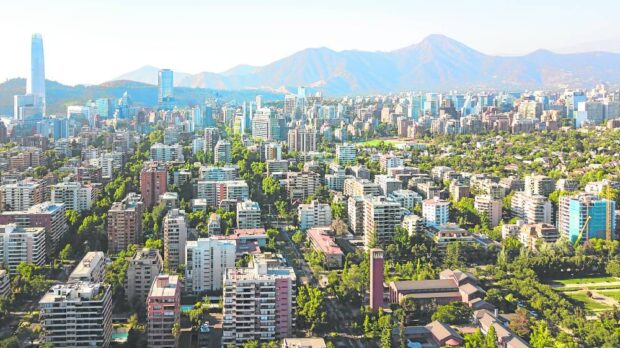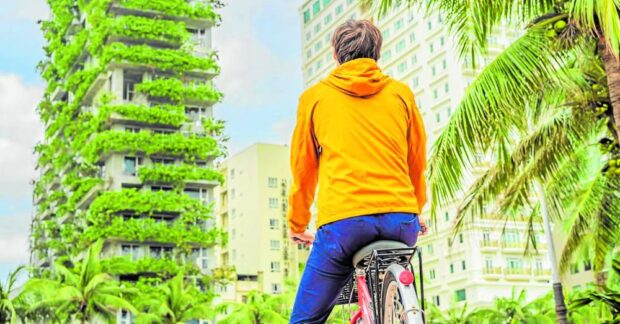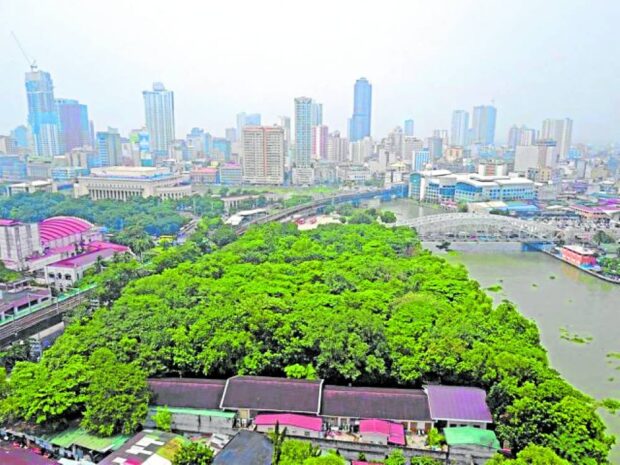Greening our increasingly dense cities

Cities can be compact as well as “green”, with meticulous attention paid to every aspect of urban greening opportunities. (FRANCISCO KEMENY VIA UNSPLASH)
Our towns and cities are presently facing several environmental issues which influence the well-being and livelihood of millions of Filipinos. Urban sprawl has resulted in pollution, various types of wastes, and loss of urban green space and biodiversity, particularly in highly urbanized urban centers.
With the increasing frequency and severity of climate-related hazards such as flooding and heat, urban design strategies can play an important role in reducing vulnerability, promoting health, and building resilience. In response to these hazards and urban densification, there is an urgent need to innovate sustainability for healthier, safer and more resilient towns and cities.
One solution is the compact city, which is identified as a high-density and mixed-use pattern which leaves space for nature and recreation. It includes a distinction between the city and countryside in physical appearance and land use functions.
The compact city restrains urban sprawl by intensifying activity in urban dense regions, reducing personal vehicle trips, and providing diverse services through mixed land use. These features contribute to a form of urban design that supports more sustainable living environments.
However, such compact cities that have an overall lower percentage of urban green space (USG) usually lack ecosystem services. Moreover, such cities are the most impacted by the urban heat island effect, flash floods, and other consequences from urban densification.
Article continues after this advertisementIn order to contrast the urban heat island effect and flash floods and effectively provide ecosystem services, sufficient and high-quality USG and other greenery elements should be readily made available to urban residents. Improving public health through urban development and greenery renewal of compact cities is an important part of the sustainable development concept.
Article continues after this advertisementThe practice of urban green infrastructure has recently been broadened by the concept of blue-green infrastructure (BGI). However, BGI benefits are neither sufficient nor equitably distributed across our cities and urban populations.
Understanding the relationship between urban population and quality and amount of green space is vital in terms of sustainability, health, and resilience of urban areas. BGI offers a variety of social qualities that focus on accessibility, recreational use, management as well as political and financial benefits.

Urban green space can supply people’s daily need to be in contact with nature. (HTTPS://WWW.MODESHIFT.COM)
In ecological quality terms of BGI, the natural attributes of green space comprise of plant and animal diversity and abundance, flower density, and tree canopy cover. Good quality BGI improves quality of city life via the enhancement of their attractiveness to residents, employees, tourists, and businesses.
From a social perspective, BGI impacts on safety, social inclusion, equality, civic pride, health, education and recreation. However, the majority of whatever BGI that exists in our cities are limited in size, often excluded from the built-up matrix and separated from each other by often inhospitable development areas.
From a historical perspective, the provision of urban green space has been influenced by urban complexities and improvements in human health, wellbeing and socio-ecological interactions within urban environments. The World Health Organization recommended the availability of a minimum of 9 square meters of green space per individual. Metro Manila, however, has only 5 square meters of green space available per person.
The quantity and accessibility of UGS in our cities that promote ecosystem services, disaster resilience, mental health and wellbeing can be improved through certain interventions, including rain gardens and green roofs. But the most promising is through “road diet” – a technique whereby the number and/or width of travel lanes of the road is reduced to achieve systemic improvements such as to increase safety and the widening of sidewalks to accommodate street trees and plants. Reducing lane widths to no more than 3 meters can yield space for pocket parks.
Cities can be compact as well as “green,” with meticulous attention paid to every aspect of urban greening opportunities. Urban green space can supply people’s daily need to be in contact with nature. For urban Filipinos, street-based urban green space is likely the only source of nature-based interaction readily available within reasonable distance.
The author is a Fellow of the Philippine Institute of Environmental Planners (PIEP) and Principal Urban Planner of CONCEP Inc.
